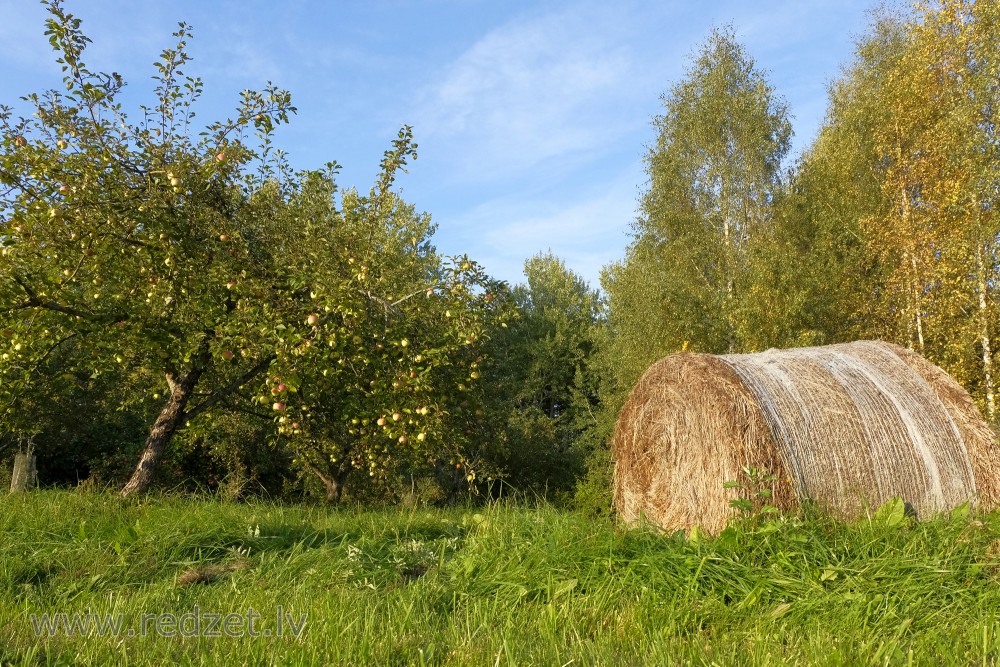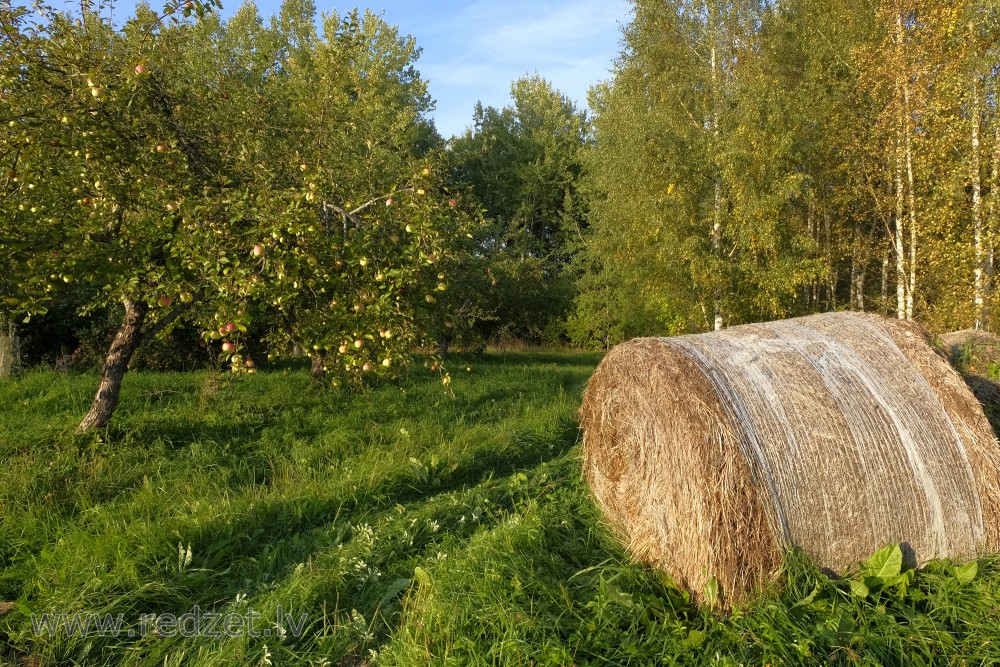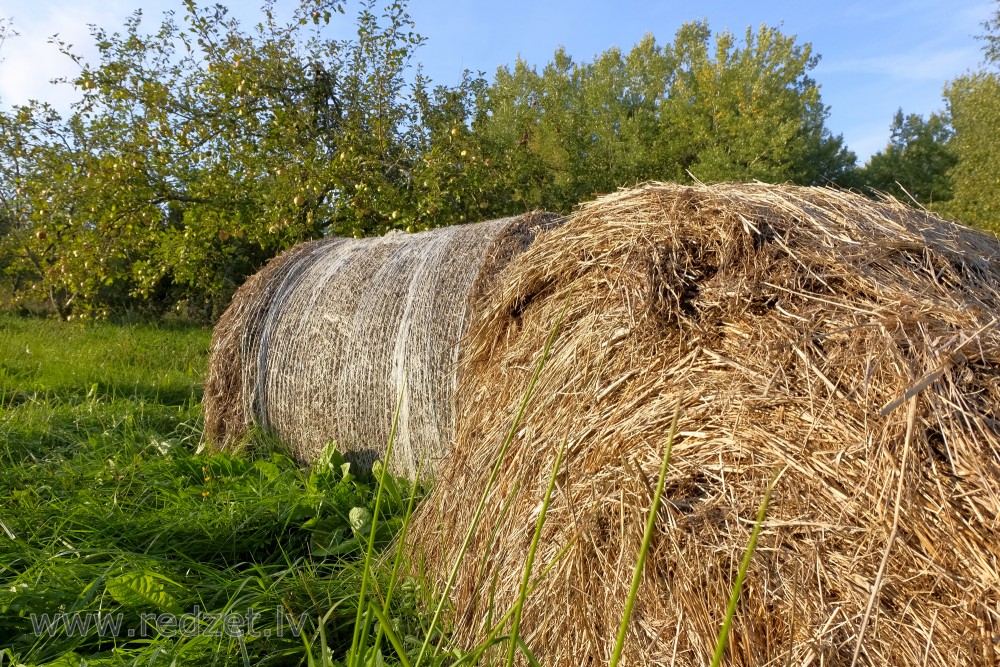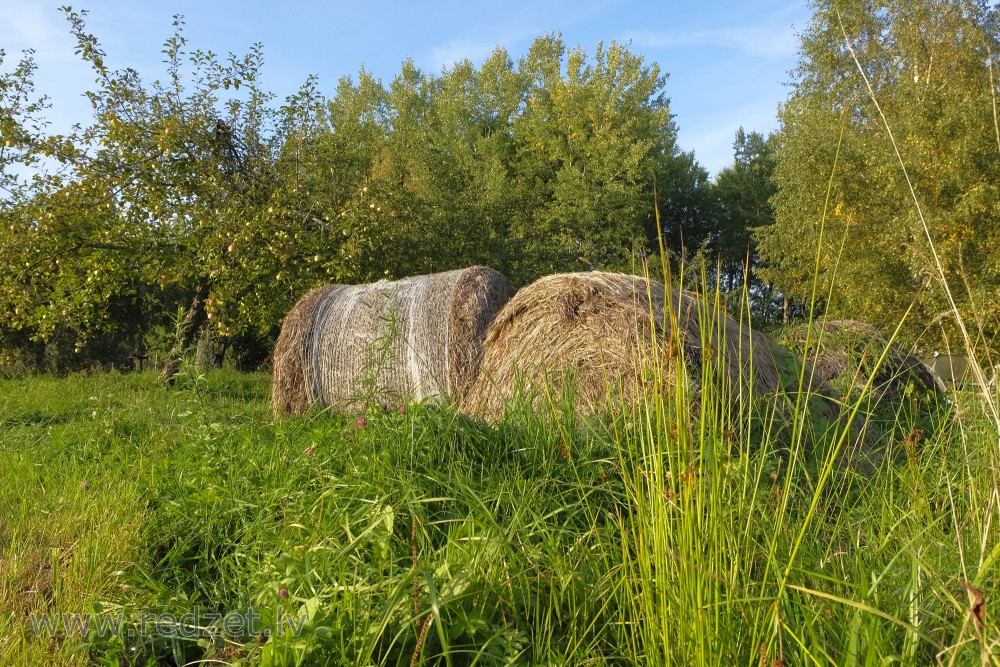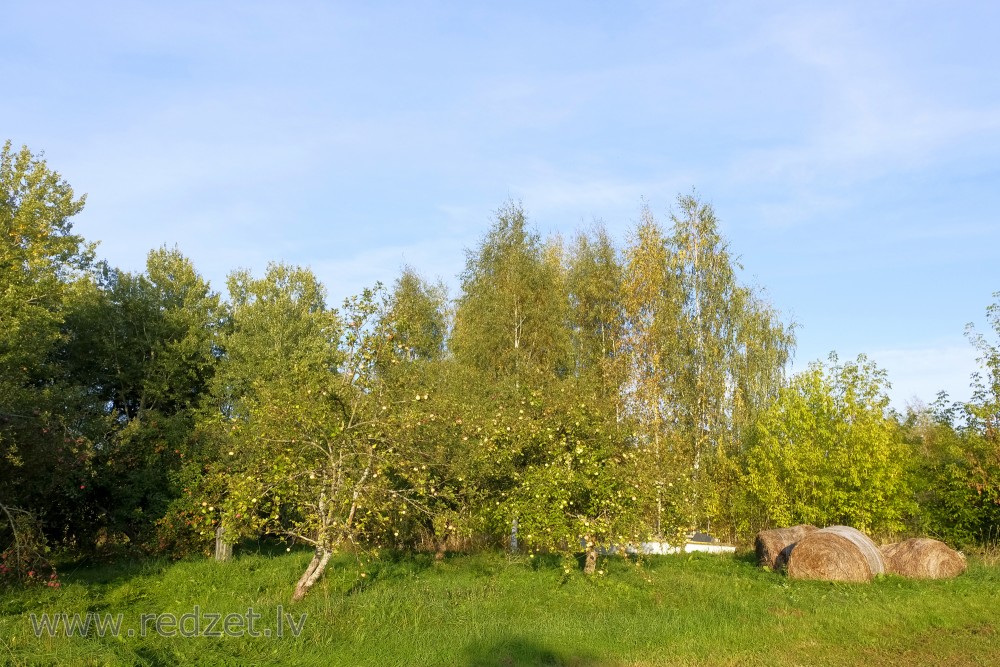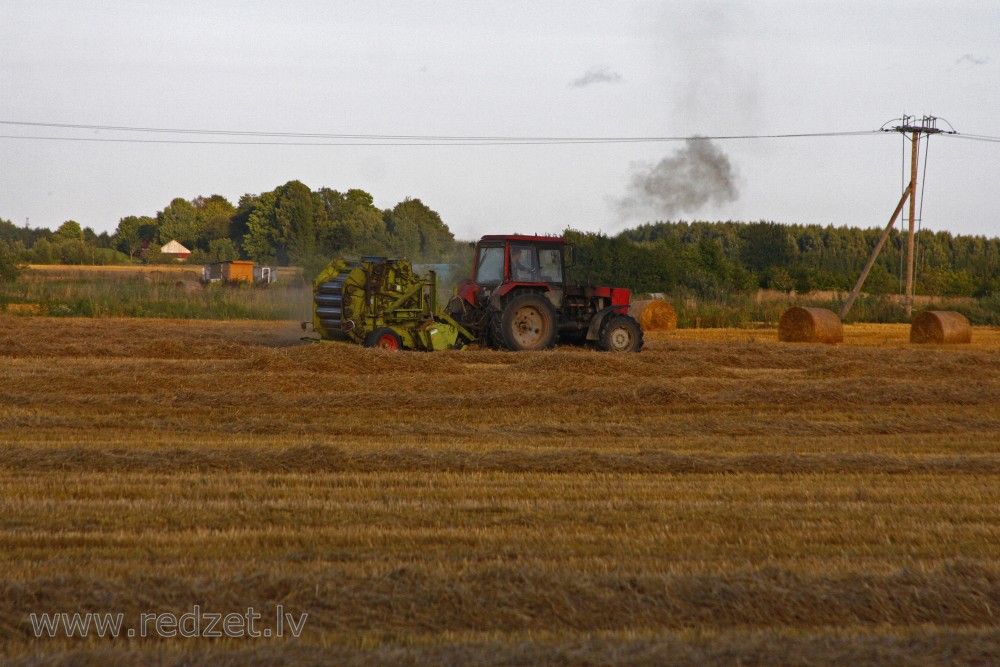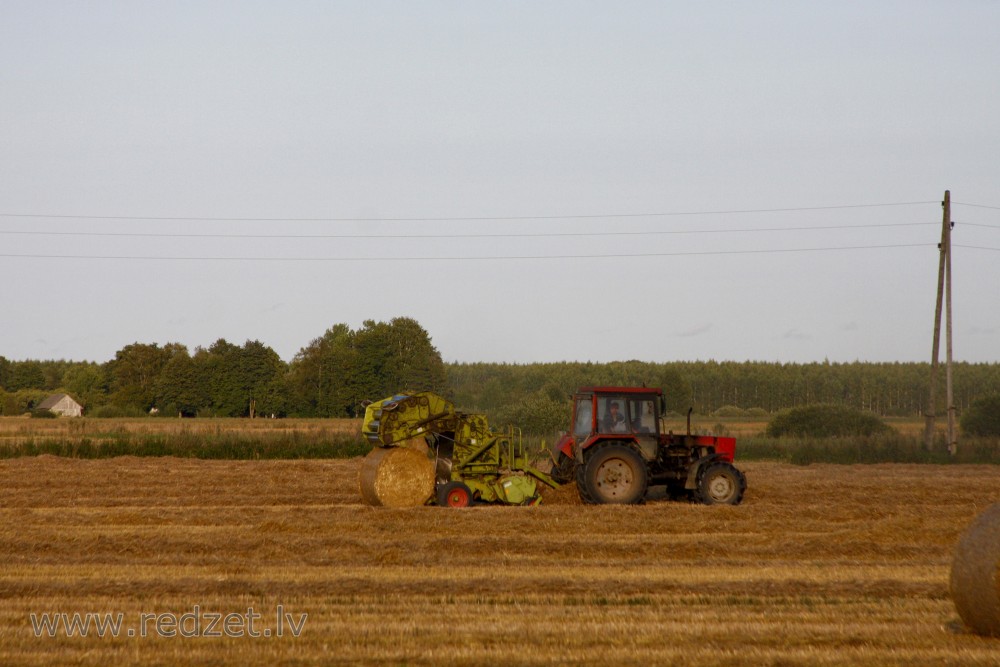Round bales
Hay is grass, legumes, or other herbaceous plants that have been cut and dried to be stored for use as animal fodder, particularly for large grazing animals raised as livestock, such as cattle, horses, goats, and sheep. However, it is also fed to smaller domesticated animals such as rabbits and guinea pigs. Even pigs may be fed hay, but they do not digest it as efficiently as herbivores.
Hay can be used as animal fodder when or where there is not enough pasture or rangeland on which to graze an animal, when grazing is not feasible due to weather (such as during the winter), or when lush pasture by itself would be too rich for the health of the animal. It is also fed when an animal is unable to access pasture, e.g. the animal is being kept in a stable or barn.
Straw is an agricultural byproduct consisting of the dry stalks of cereal plants after the grain and chaff have been removed. It makes up about half of the yield[clarification needed] of cereal crops such as barley, oats, rice, rye and wheat. It has a number of different uses, including fuel, livestock bedding and fodder, thatching and basket making.
Straw is usually gathered and stored in a straw bale, which is a bale, or bundle, of straw tightly bound with twine or wire. Straw bales may be square, rectangular, or round, and can be very large, depending on the type of baler used.
en.wikipedia.org
Baling
Small bales
Small bales are still produced today. While balers for small bales are still manufactured, as well as loaders and stackers, there are some farms that still use equipment manufactured over 50 years ago, kept in good repair. The small bale remains part of overall ranch lore and tradition with "hay bucking" competitions still held for fun at many rodeos and county fairs.
Small square bales are stacked in a criss-crossed fashion sometimes called a "rick" or "hayrick". Rain tends to wash nutrition out of hay and can cause spoilage or mold. Hay in small square bales is particularly susceptible to this, and is therefore often stored in a hayshed or protected by tarpaulins. If this is not done, the top two layers of the stack are often lost to rot and mold, and if the stack is not arranged in a proper hayrick, moisture can seep even deeper into the stack. The rounded shape and tighter compaction of small (and large) round bales makes them less susceptible to spoilage, as the water is less likely to penetrate into the bale. The addition of net wrap, which is not used on square bales, offers even greater weather resistance.
People who keep small numbers of animals may prefer small bales that can be handled by one person without machinery. There is also a risk that hay bales may be moldy, or contain decaying carcasses of small creatures that were accidentally killed by baling equipment and swept up into the bale, which can produce toxins such as botulism. Both can be deadly to non-ruminant herbivores, such as horses, and when this occurs, the entire contaminated bale generally is thrown out, another reason some people continue to support the market for small bales.
Large bales
Farmers who need to make large amounts of hay are likely to choose balers which produce much larger bales, maximizing the amount of hay which is protected from the elements. Large bales come in two types, round and square. Large square bales, which can weigh up to 1,000 kilograms (2,200 lb), can be stacked and are easier to transport on trucks. Large round bales, which typically weigh 300 to 400 kilograms (660–880 lb), are more moisture-resistant, and pack the hay more densely (especially at the center). Round bales are quickly fed with the use of mechanized equipment.
The ratio of volume to surface area makes it possible for many dry-area farmers to leave large bales outside until they are consumed. Wet-area farmers and those in climates with heavy snowfall can stack round bales under a shed or tarp, but can also use a light but durable plastic wrap that partially encloses bales left outside. The wrap repels moisture, but leaves the ends of the bale exposed so that the hay itself can "breathe" and does not begin to ferment. However, when it is possible to store round bales under a shed, they last longer and less hay is lost to rot and moisture.
Haylage
For animals that eat silage, a bale wrapper may be used to seal a round bale completely and trigger the fermentation process. It is a technique used as a money-saving process by producers who do not have access to a silo, and for producing silage that is transported to other locations. However, a silo is still a preferred method for making silage. In very damp climates, it is a legitimate alternative to drying hay completely and when processed properly, the natural fermentation process prevents mold and rot. Round bale silage is also sometimes called "haylage", and is seen more commonly in Europe than in either the United States or Australia. However, hay stored in this fashion must remain completely sealed in plastic, as any holes or tears can stop the preservation properties of fermentation and lead to spoilage.
en.wikipedia.org
